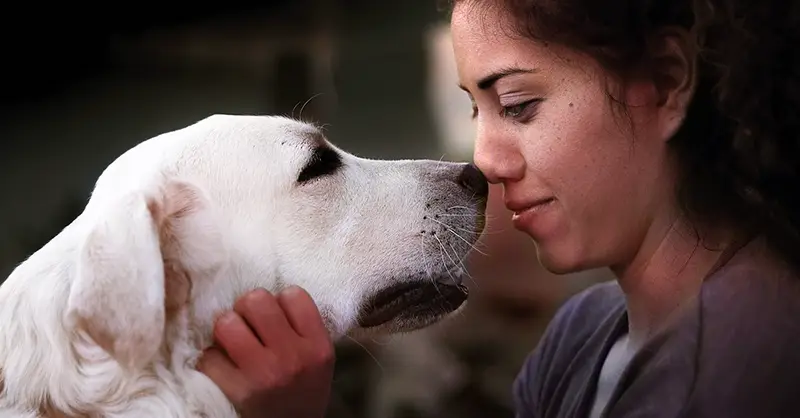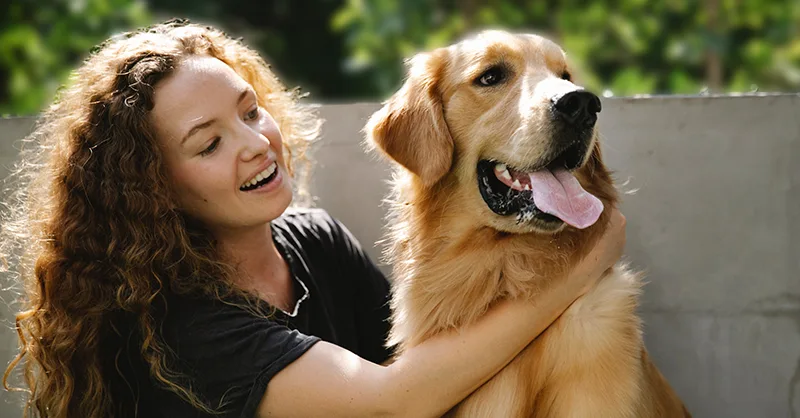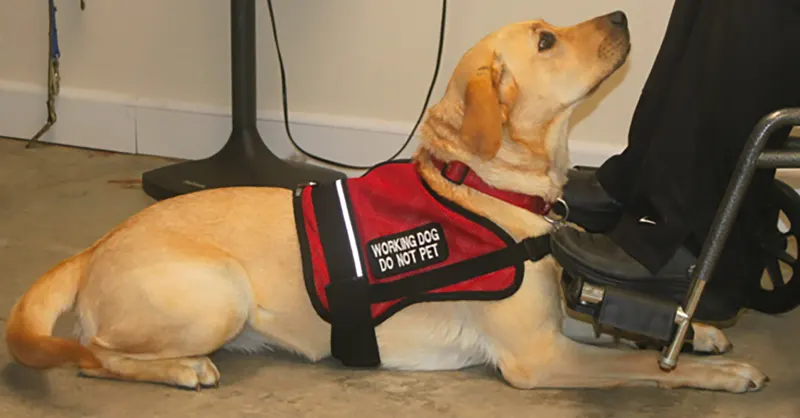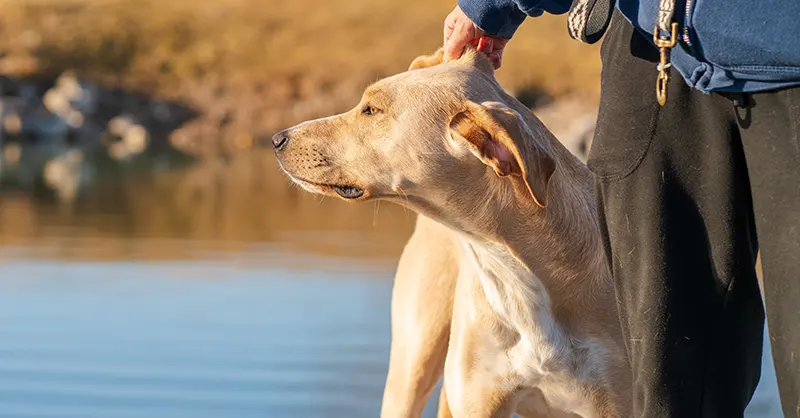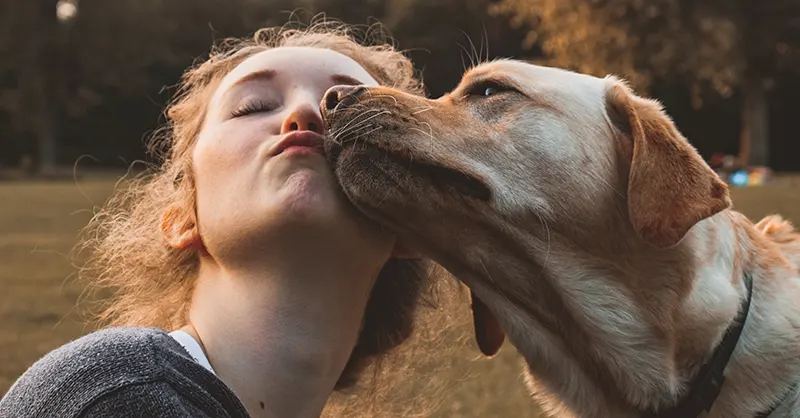Archive for the ‘Service Dog Tips’ Category
Dogs are helping humans in many ways. For individuals with disabilities, dogs can perform tasks to assist them with daily tasks the handler could not do by themselves. These service dogs can greatly improve their owner’s life or even perform life-saving tasks. However, a good service dog comes with a cost. In this article, we’ll look at the possibilities of getting a grant to sponsor a service dog.
The Price of a Service DogBecause the work service dogs perform is so vital, a service dog’s cost can be steep. The price depends on the service dog’s breed and training, but a trained service dog from a reputable organization can cost 10,000 to 40,000 dollars. Little Angels Service Dogs, a non-profit that sells service dogs, estimates their service dogs cost about 38,000 dollars to train. Although it’s possible to train your service dog, finding the right dog and putting in the time and effort to teach them can have its costs. And unfortunately, it’s not guaranteed that the dog you choose to train will be able to perform the tasks you need in the end.
Obtaining a Grant for a Service DogTo help mitigate the cost of a service dog, many service dog agencies offer grants. These organizations are usually non-profits, foundations, or businesses that assist people who are disabled and need a service dog. Most of these agencies require that you apply and give verifiable documentation of your disability to qualify for a grant.
A grant is not a loan; it doesn’t require repayment to the people you received the grant from. Some organizations receive donations from the public or funds from the government to obtain and train service dogs, and grants are used in place of cash payment for these dogs from the person in need. Some grants may cover the full cost of a service dog, while others may provide partial payment, and the recipient of the dog must cover the rest. Applying doesn’t always guarantee a service dog, but the process is straightforward.
Steps to Get A Grant for a Service Dog 1. See a DoctorBefore starting the process of seeking a grant for a service dog, you should speak to your doctor. Most organizations will require a letter or prescription from your doctor stating that a service animal can help you manage your disability. Your doctor should note what type of meaningful assistance the service could provide to mitigate the issues caused by your disability.
2. Look for an Organization and ApplyLuckily, some organizations exist to help people with disabilities obtain a service dog. A few organizations cater to a particular location or demographic (for example, veterans), so it’s a good idea to investigate the organization before applying. Look for reputable agencies with good reviews, and don’t be shy to ask other people for their opinion.
When applying for a service dog grant, study the organization’s primary mission, as some may focus on a specific demographic.Here are a few reputable organizations that offer grants for service dogs:
NEADSNEADS is a highly reputable organization with a long history in the service dog industry. Although the service dog’s cost is free, each client must agree to fundraise $8,000 with the help of NEADS fundraising kits and resources. NEADS offers service dogs for children, veterans, and adults who are hearing impaired.
Patriot PawsPatriot Paws work with military veterans to connect them with the right service dog to help with their disability at no cost. Although all veterans may apply, priority goes to Desert Storm veterans.
Paws with a CausePaws with a Cause is a non-profit which operates through public donations. Service dog applicants pay a nominal fee to apply for a service dog. If approved, service dogs are provided at no cost. To qualify, applicants must have a physical disability, seizure disorder, a hearing impairment, or have a child with autism.
Who Gets a Grant?Technically, grants go to organizations, not individuals. This is why people seeking a service dog must apply to a non-profit or business to receive a service dog funded through grants. Remember that you may not receive a service dog immediately and may need to apply to many organizations. Part of the application process requires verifying your information, and a field agent may come to your home to evaluate whether it’s safe for a service dog.
Note that the yearly costs of a service dog from grooming, veterinary fees, and food are often not included. Therefore, the recipient must have the financial ability to provide for the service dog for the years to come.
According to the Anxiety and Depression Association of America (ADAA), anxiety disorders are common within the U.S. About 18% (about 40 million) of all adults in the country have an anxiety disorder. Anxiety, if left untreated, can cause distress, depression and interfere with work and relationships. Treatments for anxiety include cognitive-behavioral therapy (CBT), medication, lifestyle changes, and service dogs. Learn how an anxiety service dog can help and what kinds of tasks they can do in this article.
Anxiety and Service DogsAll of us experience stress. Stress is a normal part of life and can even motivate us to better ourselves and make progress. When stress becomes overwhelming and uncontrollable, however, it turns into an unhealthy form of anxiety.
An anxiety disorder can become persistent and excessive, making everyday situations challenging—maybe even impossible. People who have anxiety might avoid important social events due to their fears. They experience panic attacks or become overwhelmed in crowds, preventing them from having a healthy social life. Anxiety can impede work and school performance, limiting a person’s ability to succeed.
What Tasks Can a Service Dog Do for Someone with Anxiety?In all the situations mentioned above, anxiety service dogs can offer vital assistance. More than a supportive presence, anxiety service dogs carry out essential tasks that help manage a person’s anxiety. The following are a few examples of the many tasks these dogs can offer:
Tactile StimulationAlthough many dogs lick their owners or perform nose bumps as a sign of affection, anxiety service dogs can do these actions on command in the presence of numerical distractions. Tactile stimulation—like repetitive licking—can change a person’s focus away from their anxiety, prompting them to use their own positive coping mechanisms and regain composure.
Deep Pressure TherapyThe body’s central nervous system manages sensory integration, processing information from the senses to respond appropriately. Unfortunately, anxiety can cause sensory overload, disrupting the central nervous system’s ability to react logically to the outside world.
A service dog can perform deep pressure or deep touch pressure therapy (DTP) to calm the nervous system down, enabling them to manage their anxiety.
Find an ExitBecause an anxiety attack can occur at any time, it helps if the person undergoing the attack can leave the area whenever necessary. An anxiety service dog can receive training to find the nearest exit upon command or cue, leading a person away from a distressing or embarrassing situation.
Crowd ControlPeople who have anxiety may experience claustrophobia in crowded situations. However, they can also feel boxed in even if only one or two people are in their personal space. An anxiety service dog can serve as a buffer between their handler and the people around them by placing itself between their handler and someone else.
An anxiety service dog can help their handler control their fears in crowded situations. Obtaining Emergency Phones or MedicationAnxiety service dogs can receive training to fetch emergency cell phones and medication. For example, an emergency telephone (designated for use only in emergencies) can help a person to obtain help as soon as possible. Additionally, anxiety service dogs can receive emergency medication to help their handler calm down.
Turning on the LightsPeople who struggle with Post Traumatic Stress Disorder (PTSD), a type of anxiety disorder, are sometimes afraid of the dark. An anxiety service dog can enter the room first and flip on the lights, keeping their handler from suffering through being in the dark.
Performing Safety ChecksAfter experiencing a traumatic event, like a robbery or home invasion, a person can develop PTSD. An anxiety service dog may receive training to investigate an area or room before they enter, reassuring their handler that they’re safe. For many people with PTSD, getting affirmation of their safety is of utmost importance.
Hyper-Vigilance ReductionAnxiety can trigger hyper-vigilance, making a person feel unsafe even in typical environments. A state of perpetual hyper-vigilance becomes distressing and disabling without treatment, making daily activities nearly impossible. An anxiety service dog can serve as a reality check for a person with anxiety. The dog can be a source of reassurance, allowing them to concentrate on their daily lives without worrying about unrealistic dangers.
A Calming InfluenceWhen looking for the ideal anxiety service dog, temperament is critical. An intelligent dog who is gentle, calm, and not prone to agitation is the perfect candidate. A dog that’s anxious themselves can still function as an excellent pet but wouldn’t make for a good service dog in general.
In short, an anxiety service dog should be an overall calming influence to someone with anxiety. The tasks listed in this article are only a few examples of the many ways an anxiety service dog can help manage anxiety disorders. They serve as a stabilizing influence and are vital to their handler’s state of mind and well-being. More than a pet, an anxiety service dog allows individuals with anxiety to live a safe and happy life.
Training a service dog is the most significant part of their work. It doesn’t matter how well-behaved a dog is; they cannot work as your service dog if they can’t perform the tasks you need. After all, your health and safety depend on their ability to execute their functions. Though as essential as training is, there is another element just as important as training: bonding.
If you have bonded with your service dog right away, consider yourself lucky. For many, bonding takes some time, especially for those who purchased a service dog that’s already trained. Bonding is the foundation for both the working and personal relationship between a service dog and its handler. In this article, we will touch on ways to bond with your service dog successfully.
How to Successfully Bond With Your Service DogAs the saying goes, “Teamwork makes the dream work.” A service dog and its handler is a team. To make that partnership successful, they must both be bonded to each other. With bonding comes trust and confidence, giving the service dog the right environment to do their job.
Despite having to bond with a dog, many elements of traditional team-building efforts can apply to the relationship between a service dog and its handler.
1. Give the Bonding TimeBuilding a new relationship with a new service dog takes time, in a very literal sense. Spending quality time together allows both you and your dog to get to know each other and overcome any miscommunications or kinks in training. Spending time with a service dog while working and playing allows the dog to acclimate to a handler’s nuances in speech and body language. Also, dogs are naturally observant, and they change their behaviors according to the rhythm and flow of their owner’s day. Allotting enough time together to get to know each other is the first step to bonding with your service dog.
2. Use Food as Incentive for Your Service DogAnyone who has a dog knows how strong food is as an incentive when training a service dog. Food can also help to bond. Feeding meals to a dog by hand, bit by bit, allows a dog to associate good things (food) with its new human. Hand feeding also instills trust between a dog and its handler. Treats can also be fed periodically, familiarizing the dog with its environment and tasks. As a dog begins to build a bond with you, you can slowly transition to traditional feedings. Be careful not to overfeed a dog or become too dependent on treats for your service dog’s compliance.
3. Play Hard—but Maintain OrderMuch of the life of a service dog is about work. Because of this, a new service dog and its handler must play together. Every dog has a different style of playing and preferences, so playing with your service dog is an opportunity to know their likes and dislikes.
Shower your service dog with a lot of encouragement and affirmations, getting them used to your approval. Playing with your service dog also lets them associate you with downtime. During play, make sure to establish yourself as their owner. Play games that initiate direction and compliance. Following their handler’s orders is something a service dog needs to do consistently, even during their leisure time.
To bond with a new service dog, playtime is a great and fun way to get to know each other better. 4. TetheringTethering is not for everyone and can be a controversial topic. However, many owners find tethering to be a quick way to bond with a new dog. Tethering includes keeping your new dog attached to you with a leash at all times, letting the dog get used to your daily routine and activity. The AKC approves the responsible use of tethering to encourage bonding and training.
Don’t confuse tethering with tying a dog up outside by itself or cruelly leaving a dog tethered without food or water. And never leave a tethered dog unsupervised. When tethering is used correctly for bonding, the results can be very positive.
If All Fails Consult a Trainer or VeterinarianIf you have difficulty bonding with your new service dog, consult with a trainer (preferably the dog’s original service dog trainer) or your veterinarian. They might have suggestions unique to their experiences that can help you and your service dog bond appropriately. Your service dog may also have developed physical or cognitive issues that may prevent them from bonding with you, so it’s best to get outside consultation if bonding has become a challenge. Very often, it just takes time and a lot of love for a dog and handler to become a reliable team.
Let everyone know your medical service dog is an indispensable part of your life with your Service Dog ID. Get your medical service dog registered below.
